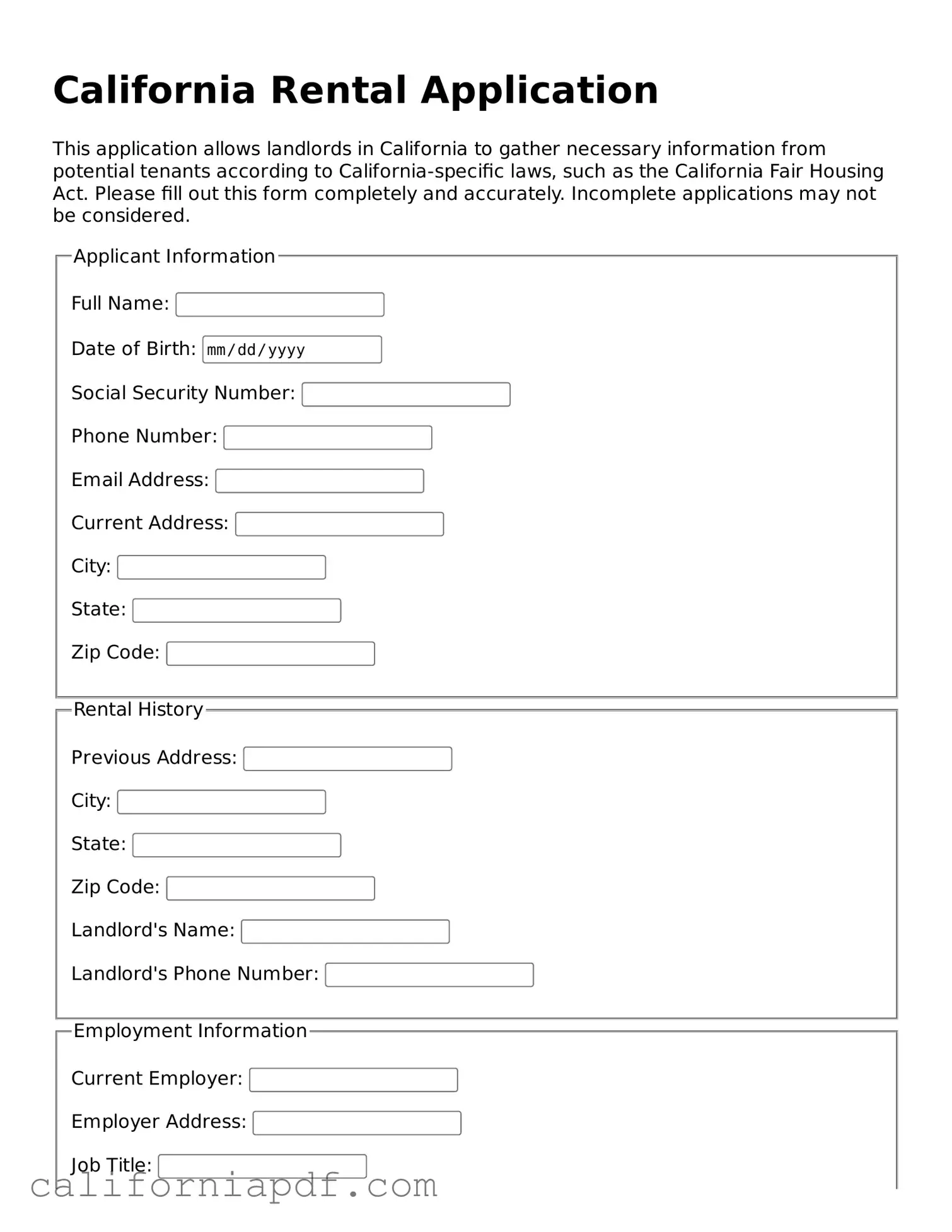The California Rental Application form is a standard document used by landlords in the State of California to screen prospective tenants. This form collects information from an applicant about their background, rental history, employment status, and financial stability. Landlords use this form to assess whether an applicant meets their criteria for tenancy in a rental property.
Applicants will be asked to provide a wide array of information on the California Rental Application form, including but not limited to:
-
Personal Identification (Name, Date of Birth, Social Security Number)
-
Current and previous addresses
-
Employment information
-
Monthly income details
-
References from previous landlords or employers
-
Consent to perform a credit and background check
Yes, in many cases, landlords require a non-refundable fee to process a rental application. This fee covers the cost of conducting background and credit checks. The amount can vary, but California law limits application screening fees and requires that the fee not exceed the landlord's actual out-of-pocket costs.
How long does the application process take?
The duration of the application process can vary based on several factors such as the landlord’s efficiency, the accuracy of the information provided, and how quickly references respond. Generally, it takes anywhere from a few days to a week. Some landlords may expedite this process, while others may take longer to review each application carefully.
Can a landlord refuse to rent to me after reviewing my application?
Yes, a landlord has the right to refuse rental to an applicant based on information obtained during the application process. However, it's important to note that any rejection must comply with fair housing laws. Landlords cannot discriminate against applicants based on race, color, religion, national origin, sex, familial status, disability, or any other characteristic protected under federal, state, or local law.
What happens if my rental application is approved?
If your rental application is approved, the landlord will typically provide you with a lease agreement to review and sign. This agreement outlines the terms and conditions of your tenancy, including rent amount, payment due dates, policies on pets and guests, and any other rules or requirements. It's important to carefully review the lease agreement before signing to ensure you understand all the terms.
What if there are errors on my application?
If you discover errors on your application after submitting it, you should contact the landlord or property management company as soon as possible to correct the inaccuracies. Providing incorrect information, whether intentionally or by mistake, can affect your eligibility for a rental, so it's crucial to ensure all the information is accurate and up-to-date.
Can I get my application fee back if I decide not to rent or if my application is denied?
Generally, application fees are non-refundable even if you decide not to rent the property or if your application is denied. Landlords use these fees to cover the costs associated with processing your application, including background and credit checks. Before submitting an application and fee, make sure you're interested in the property and meet the landlord’s rental criteria to avoid unnecessary expense.
